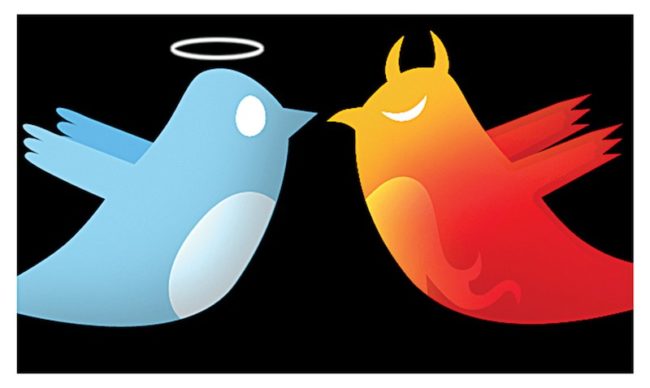Savanna Strickland depends on social media for news. As a high school senior, Strickland is all about time management, and Twitter makes it easier. With just two taps, Strickland is reading today’s top headlines on Twitter’s Explore tab.
“I’ll watch the news when I can, but it’s just, if you go to school and have extracurricular activities, it’s hard,” Strickland said.
Strickland is not the only one turning to social media for news. According to a 2017 Pew Research Center survey, social media is increasingly becoming a source of news for U.S. adults.
SMU journalism professor Jake Batsell is an expert in digital journalism and trains journalism students to adapt to this ongoing change. He teaches a digital journalism class and wrote a book on the subject titled “Engaged Journalism: Connecting with Digitally Empowered News Audiences.” Batsell has a simple answer to why this shift in news sources is occurring.
“Because we use social media so much now to document our lives and to communicate with friends, it’s natural that we would share and comment on the news of the day as part of those social streams,” Batsell said.
The Pew survey shows that while two-thirds of U.S. adults reported getting at least some of their news from social media sites, only 18 percent use traditional newspapers and 33 percent use news websites/apps.
SMU student You Wu fits within both the former and latter groups by using traditional news sources for hard news and social media sites for soft news.
“I use news apps, so [I] sometimes read the news on the apps,” Wu said. “And then, I use the social media platform to know the stars’ films, that kind of news.”
SMU student Guanlin Zhou follows a similar pattern by using a combination of Chinese news applications and social media for news.
“I use some Chinese application,” Gualin said. “But sometimes I use Facebook to read some news.”
Despite the five-percent increase in adults who get their news from social media sites in the past year, the percentage of those with at least a college degree has dropped by five percent. SMU student Luke Abbattista is part of the latter group and prefers not to use any social media as a news source.
“I just try to avoid it all,” Abbattista said. “It doesn’t really work because you don’t know what’s real and what’s not.”
Abbattista turns instead to network nightly television; only 26 percent of all adults in the survey said they do the same.
Batsell wears a smart watch and has a New York Times virtual reality viewer on his office desk, but he does not claim social media as his main source of news. Instead, he keeps up with current events through news websites and his two physical newspaper subscriptions.
“It’s a ritual,” Batsell said. “I enjoy the serendipity of discovery of reading the newspaper, the print newspapers.”
Although Batsell enjoys flipping through the black-and-white pages of the Sunday paper, he does not think this experience will last forever. He cannot entirely predict the future of traditional news media, but Batsell does think traditional newspapers will eventually become a “novelty experience.” As a journalism professor, he still believes the importance of their principles will remain.
“Doing reporting, interviewing people one-on-one, checking the documents, doing the shoe leather work, you know, to confirm the facts is always gonna be so crucial to the basic functioning of our democracy,” Batsell said.
Batsell may be a digital journalism expert, but he keeps his news media and social media balanced. He offers advice to those who want to use social media as a news source and still be well-informed citizens.
“The best way to use social media for news purposes is as an alert system as a way to stay plugged in, not as a replacement for fully reported news that provides the context that good journalism provides,” Batsell said.
Despite this advice, the upward trend of adults using social media as a news source does not seem likely to shift anytime soon, if ever. Strickland will continue to be a part of this national occurrence as many others continue to join the movement as long as social media sites remain a punctual source of news.
“A lot of times things are posted on Twitter, Instagram and you see, you find out about things way sooner through there” Strickland said.









